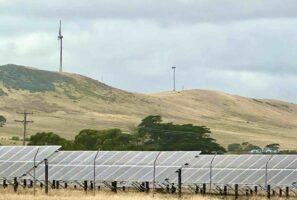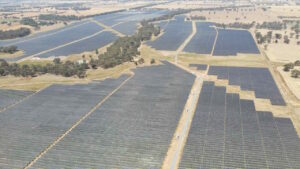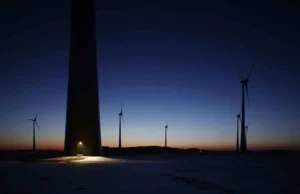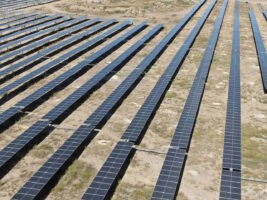Coal-fired power’s contribution to large-scale electricity generation in Australia has fallen below 70 per cent for the first time in the history of the modern grid, a new report from The Australia Institute has shown.
TAI’s June 2020 National Emissions Report, published on Tuesday, charts the changing generation mix of Australia’s National Electricity Market, and the latest data on energy sector emissions.
For the year to May, as the chart below shows, the renewable energy share of Australia’s total generation mix is continuing to grow rapidly, having recently passed the milestone level of 25 per cent, including rooftop solar.
 The chart also shows that total grid-scale renewables – that is, excluding Australia’s not insignificant contribution from rooftop solar – are inching ever closer to 20 per cent; another important milestone.
The chart also shows that total grid-scale renewables – that is, excluding Australia’s not insignificant contribution from rooftop solar – are inching ever closer to 20 per cent; another important milestone.
But an equally riveting flip-side to renewables growth is coal’s steady demise.
According to TAI’s data, the year to May 2020 saw total sent out coal-fired generation fall to below 66 per cent of total generation, and to less than 70 per cent of grid-level generation, excluding rooftop solar.
“This is undoubtedly the first time that the share of coal-fired electricity across the five states now making up the NEM has fallen to this level since the foundation of electricity supply in Australia, during the 1880s,” said report author Hugh Saddler.
So, a record for coal. Albeit an inauspicious one for the fossil fuel industry.
Another more auspicious record set in May was the highest ever monthly level of wind generation. The TAI report illustrates this in two different ways, with Figure 10 showing average monthly generation in the NEM and Figure 11 showing average monthly wind generation in each state, separately.
The latter reveals that Victoria has now overtaken South Australia as the state which usually has the largest volume of wind generation.
“This relationship seems certain to continue,” Saddler says, with several very large wind farms in western Victoria either very close to completion or recently commissioned and gradually scaling-up production.
Saddler also notes that this record for wind has been achieved despite AEMO curtailing output from wind farms in South Australia on a number of occasions over recent months.
 On energy sector emissions, the ultimate focus of the report, Figure 7 shows a particularly sharp fall in all indicators over the past three months, reflecting the combined effect of rapid growth in renewables generation and slightly lower electricity consumption during March, April and May, compared to the same period last year.
On energy sector emissions, the ultimate focus of the report, Figure 7 shows a particularly sharp fall in all indicators over the past three months, reflecting the combined effect of rapid growth in renewables generation and slightly lower electricity consumption during March, April and May, compared to the same period last year.












